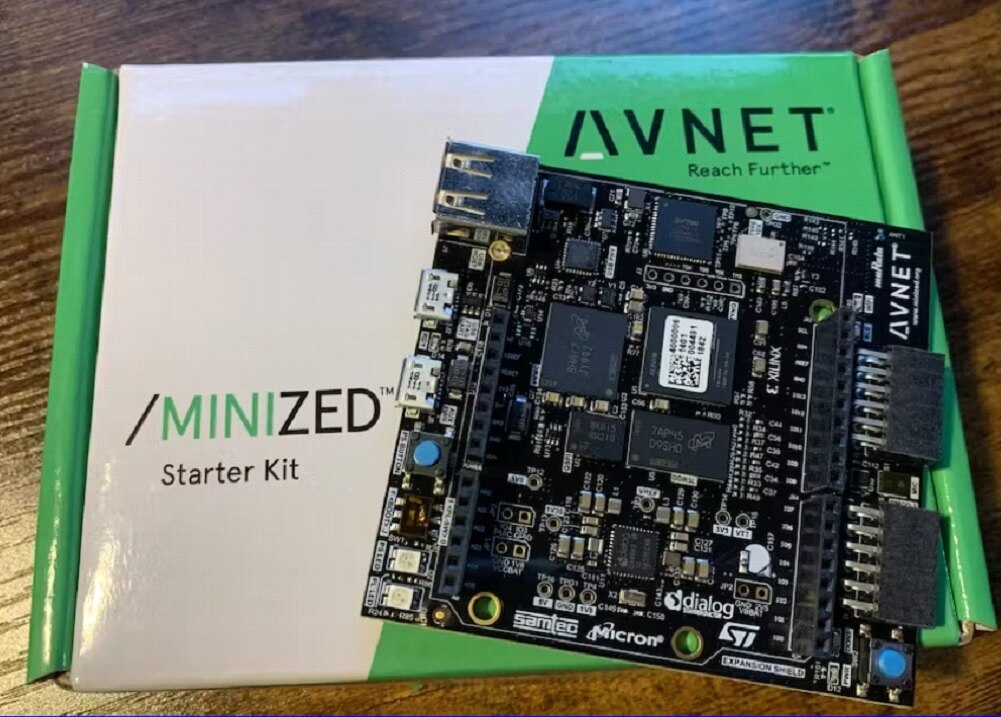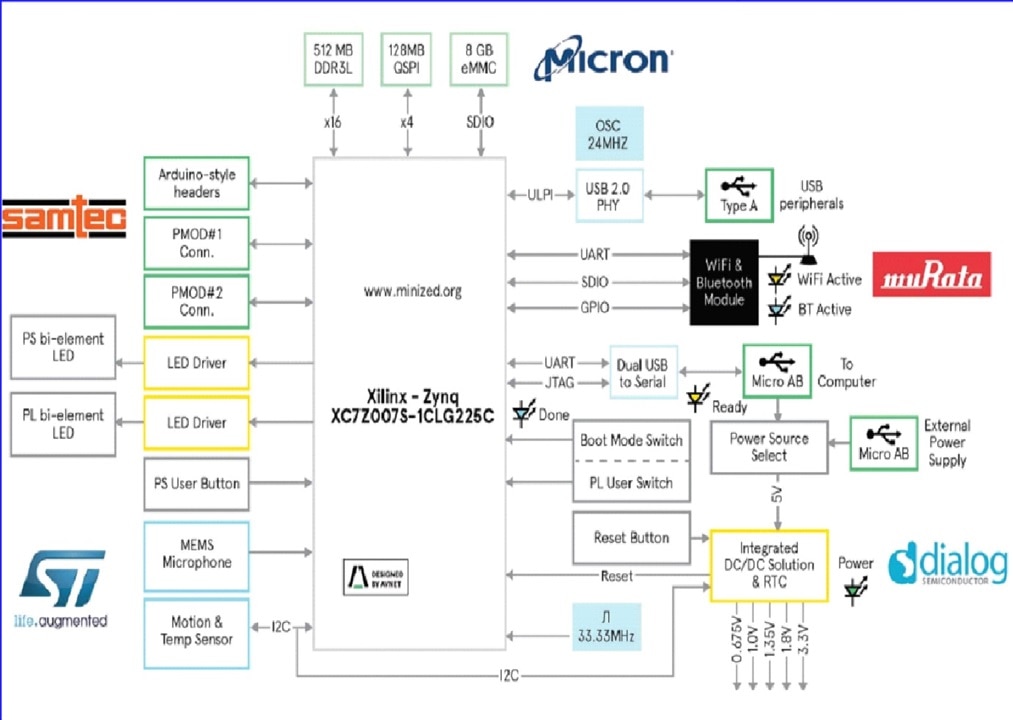Unboxing the MiniZed

Box Contains
⦁ MiniZed Board – 1
⦁ Micro USB cable – 1
⦁ SDSoc License from AMD Xilinx – 1 .
MiniZed Board Understanding

Features
⦁ Xilinx Zynq single-core SoC XC7Z007S-1CLG225C.
⦁ Micron storage: 512MB DDR3L, 128Mb QSPI flash, 8GB eMMC.
⦁ On-board USB to JTAG & Debug UART.
⦁ Murata “Type 1DX” LBEE5KL1DX wireless module that provides. Wi-Fi compliant with 802.11b/g/n. Bluetooth 4.1 plus EDR (Enhanced Data Rate) and BLE (Bluetooth Low Energy)
⦁ USB 2.0 host interface.
⦁ Expansion shield and dual Pmod-compatible interface
⦁ Dialog DA9062 Power-management IC with programmable GPIO
⦁ ST Micro: MP34DT05 MEMS microphone
⦁ ST Micro: LIS2DS12 Accelerometer & Temperature sensor
⦁ User pushbutton, switch and bi-filament LEDs x 2.
 .
.
Board Dimention – 77mm X 71mm
PCB Stack up

PCB Stack up with thickness – 1.56mm
Inside Mini Zed

The MiniZed is an FPGA development board that is quite appealing for its compact form factor, wireless capabilities,
PMOD I/O, Arduino compatible connectors, and it's under $100. This project serves as the starting point for a series on
this board demonstrating how to take full advantage of this mighty little dev board. There are two parts to a design using
any Xilinx development FPGA board: the base hardware design in Vivado and the software project in either Vitis or PetaLinux.
This project will simply be a hello world baremetal application for the software part of the design.
